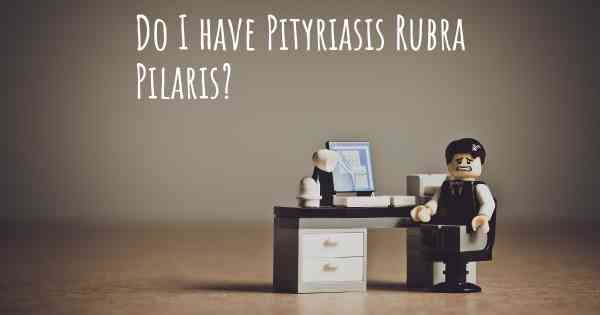How do I know if I have Pityriasis Rubra Pilaris?
What signs or symptoms may make you suspect you may have Pityriasis Rubra Pilaris. People who have experience in Pityriasis Rubra Pilaris offer advice of what things may make you suspicious and which doctor you should go to to receive treatment

Pityriasis Rubra Pilaris (PRP) is a rare and chronic skin disorder characterized by reddish-orange scaly patches, thickened skin, and tiny bumps. It can affect people of all ages, but it is more commonly seen in adults. Diagnosing PRP can be challenging as its symptoms can resemble other skin conditions. However, there are certain signs and symptoms that can help you determine if you might have PRP.
Skin Changes: PRP typically starts with small, red bumps that may merge together to form larger patches. These patches often have a well-defined border and can be scaly or flaky. The affected skin may feel rough and thickened, especially on the palms of the hands and soles of the feet. Over time, the patches may spread to other areas of the body.
Color and Texture: The patches associated with PRP usually have a reddish-orange or salmon color. The skin may appear shiny or have a waxy texture. It is important to note that PRP can affect different parts of the body in different ways, so the appearance of the patches may vary.
Itching and Discomfort: PRP can cause itching, burning, or stinging sensations in the affected areas. The severity of these symptoms can vary from person to person. Some individuals may experience mild discomfort, while others may find it significantly bothersome.
Nail Changes: In some cases, PRP can affect the nails, causing them to become thickened, ridged, or pitted. The nails may also lose their normal shine and appear dull or yellowish.
Other Symptoms: PRP can be accompanied by additional symptoms such as fatigue, joint pain, and hair loss. These systemic symptoms are more commonly seen in certain subtypes of PRP.
If you suspect you may have PRP based on the aforementioned symptoms, it is crucial to consult a dermatologist for an accurate diagnosis. The dermatologist will perform a thorough examination of your skin, review your medical history, and may order additional tests such as a skin biopsy to confirm the diagnosis.
Note: It is important to remember that this information is not a substitute for professional medical advice. Only a qualified healthcare provider can provide an accurate diagnosis and appropriate treatment plan.








